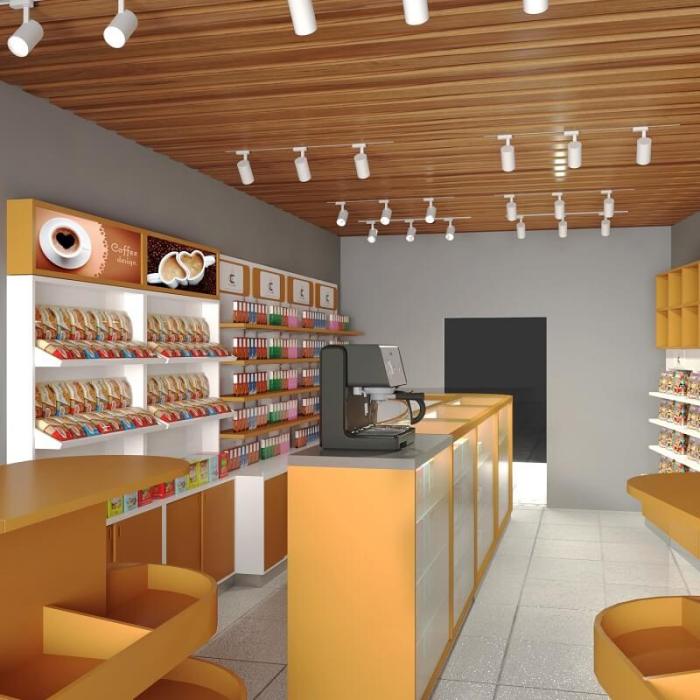Enhancing Retail Spaces: The Power of Shop Furniture Design

Embark on a journey through the world of shop furniture design, where every element plays a crucial role in shaping the ambiance of a store. From functionality to aesthetics, discover how well-crafted furniture can elevate customer experience and drive sales.
Importance of Shop Furniture Design
Well-designed shop furniture plays a crucial role in enhancing the overall aesthetics of a store. It not only adds to the visual appeal but also contributes to creating a welcoming and comfortable environment for customers.
Enhancing Customer Experience
Good furniture design can significantly improve the customer experience in a store. For example, strategically placed seating areas can encourage customers to linger longer, leading to increased chances of making a purchase. Additionally, well-designed display units can make it easier for customers to browse through products, enhancing their overall shopping experience.
Increasing Sales
The layout and design of shop furniture can directly impact sales. By creating a visually appealing and organized space, customers are more likely to feel inspired to make a purchase. For instance, attractive product displays and comfortable fitting rooms can entice customers to try out items and ultimately lead to more sales.
Reflecting Brand Identity
Furniture design also plays a key role in reflecting a brand's identity and values. The choice of materials, colors, and styles can convey a brand's personality to customers. For example, a store that values sustainability may opt for eco-friendly furniture designs, while a luxury brand may choose elegant and sophisticated pieces to align with their image.
Elements of Effective Shop Furniture Design

Effective shop furniture design encompasses various key elements that contribute to the functionality, durability, and aesthetics of the furniture. The role of color, materials, and layout is crucial in creating visually appealing and functional shop furniture. Additionally, ergonomics play a vital role in designing furniture for optimal customer comfort and usability.
Functionality
Functionality is a fundamental element of effective shop furniture design. The furniture should be designed to serve its intended purpose efficiently. This includes factors such as the arrangement of shelves, drawers, or display areas to maximize storage and accessibility for both customers and staff.
Durability
Durability is another essential aspect of shop furniture design. The materials used should be of high quality and able to withstand the wear and tear of daily use. Investing in durable furniture ensures longevity, reducing the need for frequent replacements and maintenance.
Aesthetics
Aesthetics play a significant role in attracting customers and enhancing the overall ambiance of the store. The color scheme, finishes, and overall design of the furniture should align with the branding and style of the shop. A visually appealing store layout can create a welcoming and memorable experience for customers.
Ergonomics
Ergonomics focuses on designing furniture that is comfortable and user-friendly. Considerations such as the height of counters, chairs, and tables, as well as the ease of access to products, play a crucial role in ensuring optimal customer comfort and usability.
Ergonomically designed furniture can enhance the overall shopping experience and promote customer satisfaction.
Trends in Shop Furniture Design
In the ever-evolving world of retail, shop furniture design plays a crucial role in creating appealing and functional spaces. Let's explore some of the current trends shaping the landscape of shop furniture design.
Minimalism
Minimalism continues to be a popular trend in shop furniture design, focusing on clean lines, simplicity, and functionality. This design approach creates a sleek and modern look, allowing products to take center stage without unnecessary distractions.
Sustainability
With a growing emphasis on sustainability and eco-friendliness, shop furniture designs are incorporating more environmentally-friendly materials and production methods
Modular Designs
Modular furniture designs are gaining popularity in retail spaces due to their versatility and flexibility. These designs allow for easy customization and reconfiguration, adapting to changing needs and trends in the retail environment.
Examples of Innovative Designs
- Airia Desk by Herman Miller: This sleek and functional desk combines modern design with practicality, featuring hidden storage compartments and cable management solutions.
- String Shelving System: A versatile and customizable shelving system that offers endless configurations to suit different retail spaces and display needs.
Impact of Technology Integration
Technology integration is revolutionizing shop furniture design, with innovations like interactive displays, smart shelving systems, and digital signage enhancing the overall shopping experience. These technological advancements not only attract customers but also streamline operations and improve efficiency in retail spaces.
Custom vs. Ready-made Shop Furniture
When it comes to furnishing a shop, one of the key decisions to make is whether to opt for custom-designed furniture or ready-made options. Each choice comes with its own set of advantages and disadvantages, catering to different needs and preferences.Custom-designed shop furniture offers the benefit of being tailored to specific store requirements.
This means that every piece is designed to fit perfectly within the space available, maximizing functionality and aesthetics. The process usually involves working closely with a furniture designer or manufacturer to create unique pieces that reflect the brand's identity and vision.
While custom furniture may come at a higher cost and longer lead time, the end result is often a one-of-a-kind solution that sets the shop apart from competitors.On the other hand, ready-made shop furniture provides a quicker and more budget-friendly option.
These pieces are mass-produced and readily available for purchase, making them convenient for shops looking to furnish their space quickly. However, the downside is that ready-made furniture may not always perfectly align with the store's layout or design preferences, leading to compromises in both functionality and style.
Process of Creating Custom Shop Furniture
Creating custom shop furniture involves several steps, starting with an initial consultation to discuss the store's requirements, budget, and design preferences. The designer or manufacturer then creates detailed sketches or 3D renderings for approval before moving on to the manufacturing phase.
This process allows for adjustments and customization along the way, ensuring that the final pieces meet the client's expectations.
When to Opt for Custom Furniture Design
- When the shop has unique layout requirements that cannot be met by ready-made furniture.
- When the store owner wants to create a distinct brand identity through custom-designed pieces.
- When budget and timeline allow for a more personalized approach to shop furnishing.
Overall, the choice between custom and ready-made shop furniture ultimately depends on the specific needs and priorities of the store owner. Whether seeking a bespoke solution or a quick fix, weighing the advantages and disadvantages of each option is crucial in making an informed decision.
Final Conclusion
As we conclude our exploration of shop furniture design, it becomes evident that the art of crafting retail spaces goes beyond mere functionality. It's a blend of creativity, practicality, and brand identity that leaves a lasting impression on both customers and businesses alike.
Detailed FAQs
What role does color play in shop furniture design?
Color can significantly impact the mood and perception of a store. It can evoke emotions, create a sense of brand identity, and influence purchasing decisions.
How can ergonomics affect the design of shop furniture?
Ergonomics ensures that furniture is designed for optimal comfort and usability, enhancing the overall shopping experience for customers.
What are some current trends in shop furniture design?
Minimalism, sustainability, and modular designs are gaining popularity in the realm of shop furniture design, reflecting a shift towards modernity and eco-consciousness.

